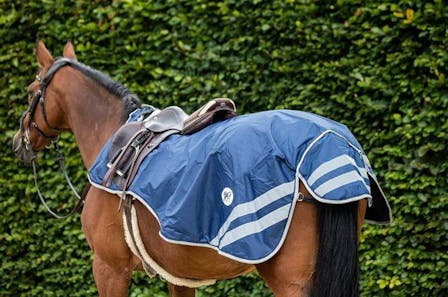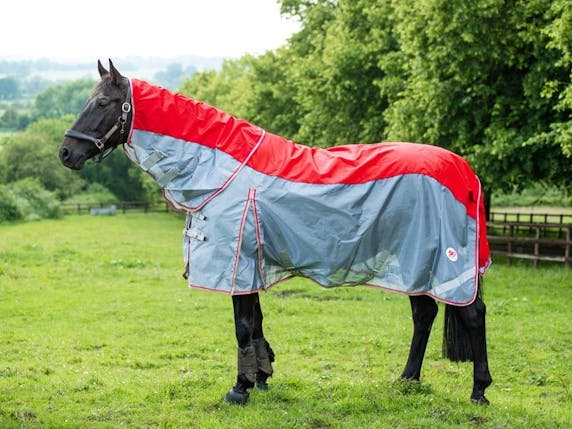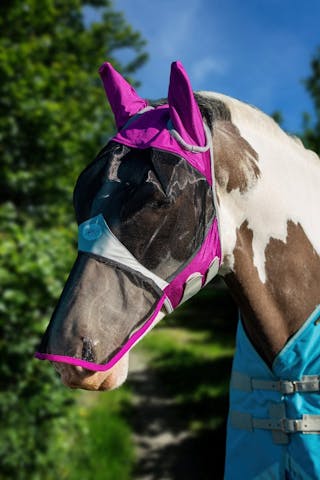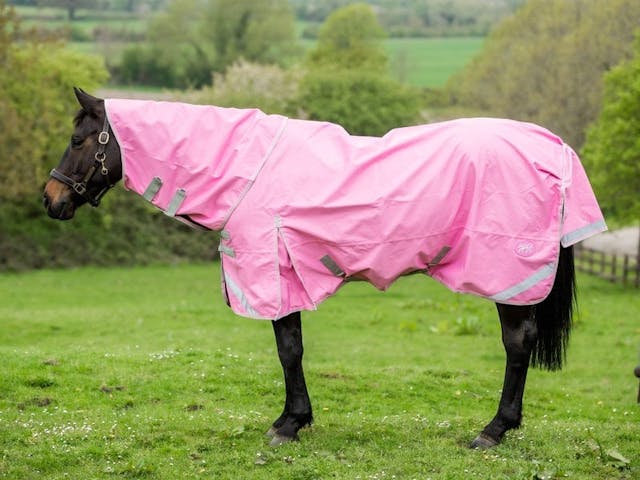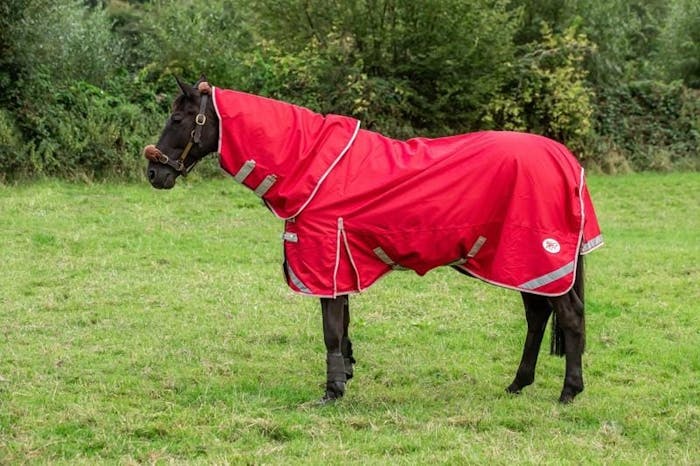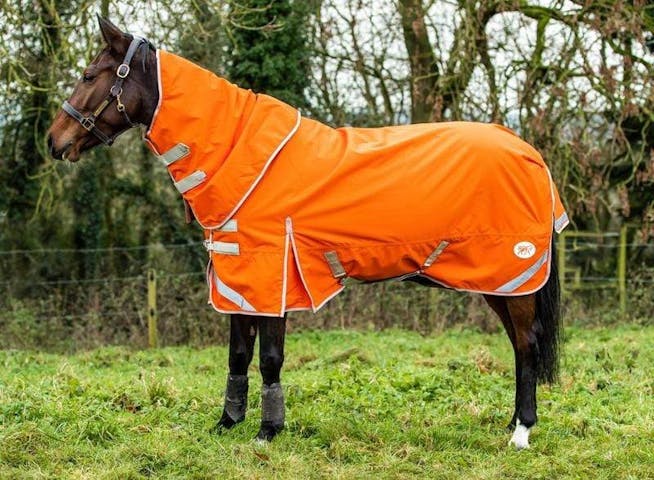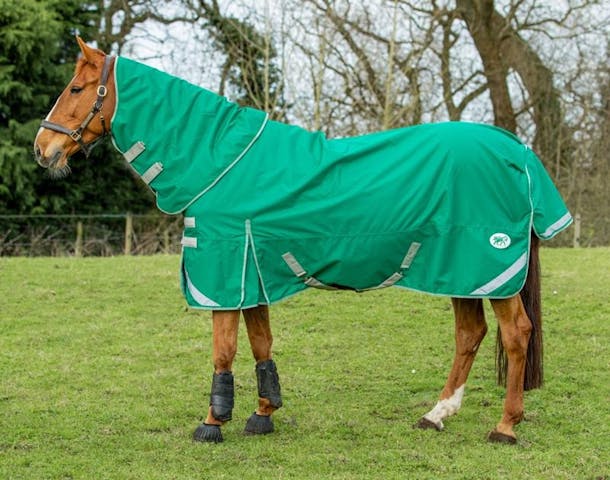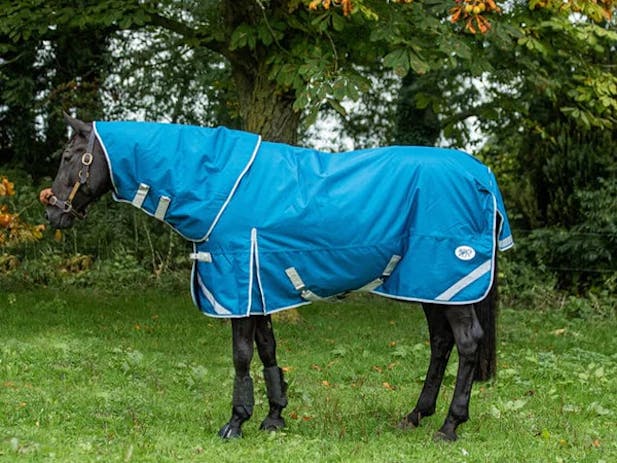different types and sizes of rugs depending on your horse...
why do horses wear rugs?
Horses wear rugs for various reasons, including to provide warmth in cold weather, protection from insects, to keep them dry in wet conditions, or to offer added comfort and support.
In addition to the reasons mentioned, horses may also wear rugs for therapeutic purposes, such as to alleviate muscle soreness or to support healing from injuries. Rugs can also help prevent coat bleaching from prolonged exposure to sunlight and can provide a barrier against dirt and debris, helping to keep the horse's coat clean and healthy.
How do i know when to rug my horse and what rug to use?
As well as different rugs, there are different breeds of horses that require certain weight rugs to which they need....
Such as the difference between rugging a cob and a thoroughbred. A cob requires very little rugging depending on the extremities of the weather conditions, whereas a thoroughbred will need heavier weight rugs throughout the colder seasons.
What is a fly rug?
1. A fly rug can have a few purposes as to why they are used. They are mainly used to keep insects and flies (especially horse flies) from biting and infecting your horse.
They can also help keep the sun off your horses back in the summer to help regulate their heat
whats a fly mask used for?
1. horses also tend to have a fly mask when the weather starts to get hot, this is also just an aid to help stop the flies from irritating the horses eyes and helps keep them clean
what weight rugs are there?
- When looking to buy rugs for your horse/horses, you need to know when to rug them and more importantly what rug to use...
If you have a horse that can handle the colder season well, like a cob, welsh cob etc, then you wont need to much covering. they would need something as little as a sheet (no fill). This will just help prevent them from the wind and the rain causing them to shiver and lose weight, it will also prevent rain scald.
The next weighted rug up would be the 50G rug. This is slightly thicker and heavier than your standard 'no fill' rug. These can also be used on the 'hardy' breeds for when the temperature does drop to keep your furry friend warm. The 50G rug can also come with a detachable neck so you have the option!
Following that, we present the 100g rug, designed for use during colder, wetter seasons. These rugs are commonly utilised for finer breeds like warmbloods and thoroughbreds.
Winter Protection: Horse rugs with a 200g fill are typically used in colder climates or during winter months to provide extra insulation to keep the horse warm and comfortable, especially when they're turned out in pastures or kept in unheated stables. Depending on your breed of horse, these types of rugs would typically be used for fine breeds.
Extreme Weather Conditions: In areas prone to sudden drops in temperature or severe winter storms, a 300g rug offers added protection to horses, ensuring they remain comfortable and healthy in challenging conditions.
What is 'rain scald'?

AVAILABLE
"Rain scald," also known as "rain rot" or "streptothricosis," is a common bacterial skin infection that affects horses. It typically occurs during wet and humid weather conditions, hence the name "rain scald," although it can also develop from prolonged exposure to moisture from sweating or inadequate grooming.
Rain scald is caused by the bacterium Dermatophilus congolensis. The bacteria can invade the horse's skin through tiny breaks or wounds, often facilitated by prolonged moisture. Once inside the skin, the bacteria multiply, leading to the characteristic symptoms of rain scald.
